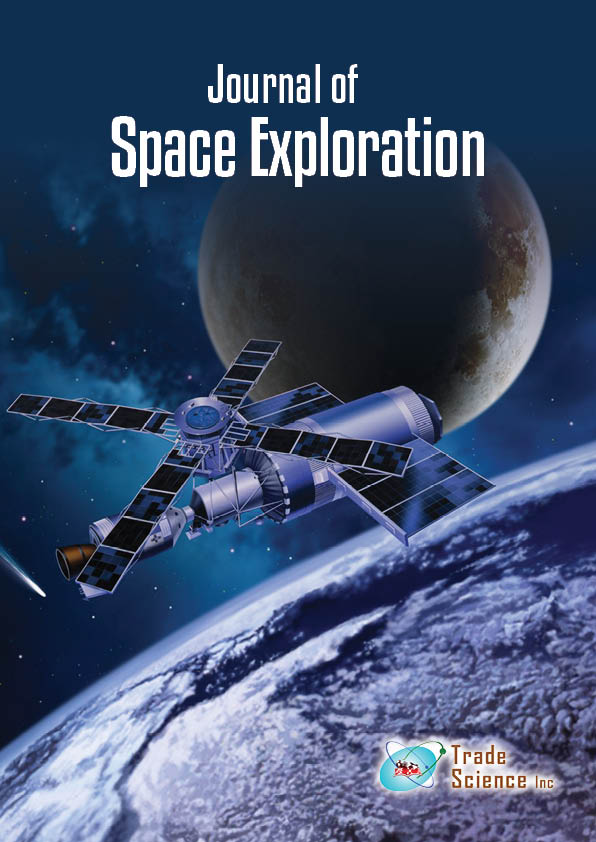Perspective
, Volume: 13( 12)The Search for Extraterrestrial Life: Advancements in Astrobiology and Planetary Exploration
Received date: Dec-8-2024, Manuscript No tsse-25-159413; Editor assigned: Dec-10-2024, Pre-QC No. tsse-25-159413(PQ); Reviewed: Dec - 12-2024, QC No tsse-25-159413(Q); Revised: Dec-14-2024, Manuscript No. tsse-25-159413(R); Published: Dec-30-2024, DOI.10.37532/2320- 6756.2024.13(12).380
Citation: Reynolds L. The Search for Extraterrestrial Life: Advancements in Astrobiology and Planetary Exploration. J Space Explor.2024;13(12).380
Abstract
The search for extraterrestrial life remains one of humanity's most profound and ambitious endeavors. With advancements in astrobiology and planetary exploration, our understanding of life's potential existence beyond Earth has expanded dramatically. As technology improves, so too does our ability to detect habitable environments on distant planets and moons. This commentary examines the significant strides made in astrobiology and planetary exploration, highlighting key discoveries and missions that have propelled the search for extraterrestrial life forward. It also considers the challenges and future directions in this exciting and evolving field.Introduction
The search for extraterrestrial life has intrigued scientists, philosophers, and explorers for centuries. From early speculations about life on Mars to modern-day missions exploring distant exoplanets, the quest for signs of life beyond Earth is integral to our understanding of the universe. The field of astrobiology, which studies the potential for life in the universe, has made substantial progress in recent decades. The intersection of astrobiology and planetary exploration, powered by advanced technology, has opened new avenues for discovering habitable environments on other worlds.
In the past, theories about extraterrestrial life were speculative, and the tools needed to search for life beyond Earth were limited. Today, through the combined efforts of space agencies and the application of sophisticated technologies, we have the capability to detect planets in the habitable zone of distant stars, analyze the atmospheres of exoplanets, and explore the surface of planets and moons within our solar system. This progress is offering new hope for the discovery of extraterrestrial life, either in the form of microbial organisms or more complex life forms.
Advancements in astrobiology and planetary exploration
Astrobiology has progressed significantly with the help of missions to planets and moons within our solar system. Mars, with its evidence of ancient water and organic molecules, continues to be a prime target for exploration. NASA’s Perseverance rover, for instance, is tasked with searching for signs of past microbial life on Mars by collecting soil samples and studying the planet's geology. Similarly, the Curiosity rover has already provided valuable insights into Mars' past conditions, hinting that the planet may have supported microbial life billions of years ago. Beyond Mars, moons like Europa (Jupiter's moon) and Enceladus (a moon of Saturn) have attracted attention due to their subsurface oceans, which may harbor the conditions necessary for life. The discovery of plumes of water vapor erupting from these moons suggests the presence of a liquid environment beneath the icy crust, which could provide a habitat for microbial organisms.
1965, providing the first close-up images of the planet. NASA's Viking missions in the mid-1970s marked the first successful landing of spacecraft on Mars. Viking 1 and Viking 2 both sent back detailed images and data from the Martian surface and conducted experiments designed to detect signs of life. These missions provided groundbreaking insights into the planet’s geology and atmosphere, and although they did not find definitive evidence of life, they laid the foundation for future investigations.
Challenges in the search for extraterrestrial life
Despite significant advancements, the search for extraterrestrial life faces several challenges. One of the main hurdles is the vast distances involved in space exploration. Even with the most advanced telescopes and spacecraft, the nearest exoplanets are lightyears away, making detailed analysis of their surfaces and atmospheres incredibly difficult.
Additionally, defining what constitutes "life" in a broader context presents challenges. Life as we know it requires liquid water, but other forms of life—perhaps based on different biochemistry—could potentially exist in environments vastly different from those on Earth. This uncertainty in the definition of life complicates the search, as we must expand our understanding of what might constitute a habitable environment or bio signature.
Conclusion
The search for extraterrestrial life continues to be one of the most captivating and important scientific pursuits. With advancements in astrobiology and planetary exploration, humanity is on the brink of making groundbreaking discoveries that could forever change our understanding of life in the universe. Mars exploration, the study of icy moons like Europa and Enceladus, and the detection of exoplanets in habitable zones are all pivotal steps toward this goal. However, the challenges are substantial, and the vastness of space, combined with technological limitations, means that the search will take time. Nevertheless, the growing synergy between astrobiology, space missions, and technological innovation holds promise for revealing the answer to one of humanity's most enduring questions: Are we alone in the universe? In the past, theories about extraterrestrial life were speculative, and the tools needed to search for life beyond Earth were limited. Today, through the combined efforts of space agencies and the application of sophisticated technologies, we have the capability to detect planets in the habitable zone of distant stars, analyze the atmospheres of exoplanets, and explore the surface of planets and moons within our solar system. This progress is offering new hope for the discovery of extraterrestrial life, either in the form of microbial organisms or more complex life forms. Beyond Mars, moons like Europa (Jupiter's moon) and Enceladus (a moon of Saturn) have attracted attention due to their subsurface oceans, which may harbor the conditions necessary for life. The discovery of plumes of water vapor erupting from these moons suggests the presence of a liquid environment beneath the icy crust, which could provide a habitat for microbial organisms.

